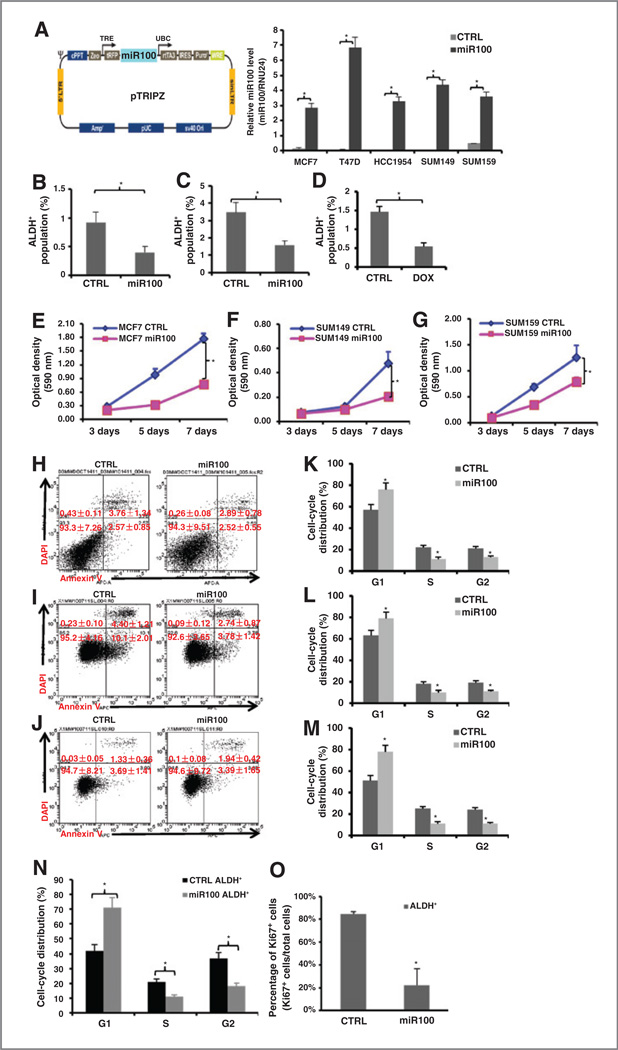Figure 2.
miR100 overexpression decreases ALDH+ population and inhibits cell proliferation. A, diagram of miR100-inducible lentiviral vector (left). Different cell lines were transduced with the pTRIPZ-miR100 lentivirus and selected with puromycin for 7 days. Cells were treated with (miR100) or without (CTRL) tetracycline (doxycycline; DOX). Total RNA was isolated and miR100 expression level were measured by qRT-PCR. B-D, transduced cells were treated with vehicle control or doxycycline (1µg/mL) for 7 days, and dissociated and utilized for Aldefluor assay by flow cytometry [MCF7 (B), SUM149 (C), SUM159 (D)]. E-G, 200–500 transduced cells were seeded in 96-well culture plates and cultured in the absence (CTRL) and presence (miR100) of doxycycline for 3,5, or 7 days. MTT assays were conducted following the manufacturer’s protocol and the optical density (OD) value was measured at 590 nm. H-O, transduced cells were treated with vehicle control or doxycycline (1µg/mL) for 7 days. Cells were dissociated and stained for Annexin V-APC and DAPI for apoptosis assay by flow cytometry (H-MCF7, I-SUM149, J-SUM159), and utilized for cell cycle by flow cytometry [MCF7 (K), SUM149 (L), SUM159 (M and N)]. Propidium iodide staining was used to analyze cell-cycle distribution. miR100 induction resulted in an increased proportion of cells in the G1 phase. O, ALDH+ cells were sorted from transduced SUM159 cells (CTRL and miR100) by Aldefluor assay, cytospun, and stained for Ki67 by immunohistochemical staining. Both Ki67+ tumor cells and Ki67− tumor cells were counted in at least five random fields. miR100 induction significantly decreased Ki67+ cells in ALDH+ cell populations. *, P< 0.05. Error bars, mean ± SD.

